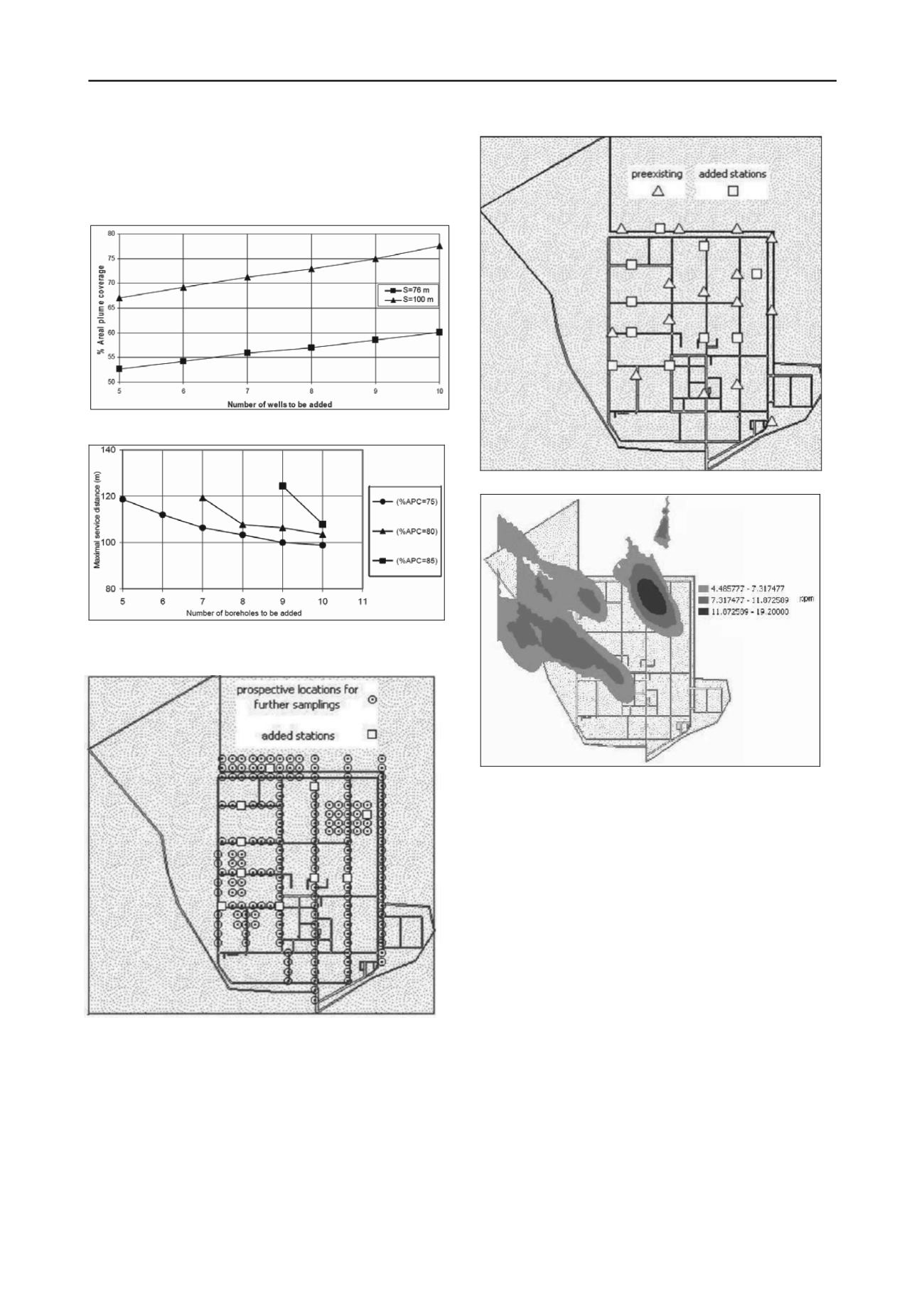
1861
Technical Committee 206 /
Comité technique 206
estimated chemical concentration (weights). This model located
the additional stations (i.e. monitoring wells) at regions with
high concentration of contaminant and at the same time
prevented clustering of the wells (See the layout in Figures 5
and 6).
Figure 3. Cost-effectiveness curves for two distinct values of
S
derived
from Figure 2.
Figure 4. Variation of
maximal service distance (S)
versus the number
of added wells (
P’=P-15
)
.
Figure 5
.
Add
ed
wells on the discretized network.
Fig
ure 6. Added and existing wells.
Fig
ure 7. Hot spots of oil contamination beneath the refinery
(concentrations are in terms of Total Organic Carbon).
3 GEOSTATISTICAL ANALYSES ON THE
AUGMENTED DATA SET
A geostatistical analysis, using the same geostatistical tool
which was used in nodal weight estimation (i.e. estimation of
chemical concentrations at different nodes), was conducted on
the extended data set to assist with delineating the locations and
the extent of hot spots of oil contamination beneath the refinery.
Three different hot spots were identified at three distinct areas.
Figure 7 shows the location and the extent of the hot spots.
4 CONCLUSIONS
A geoenvironmental case history of applying an optimisation
model in practice is illustrated in this paper. The Maximal
Covering Location Problem (MCLP) was employed to enhance
the efficiency of an existing network of monitoring wells in an
oil refinery in order to assist with delineating the mounds of oil
contamination beneath the refinery. After installation of the
added monitoring wells at the locations predicted by the model
(i.e. monitoring network augmentation), the results obtained
from the augmented network demonstrated the robustness of the
method. The model helped to prevent clustering of the added
monitoring wells in the areas with high estimated values of the
attribute (i.e. concentration) and at the same time helped to
benefit the monitoring from further sampling at these areas.
Using the data from the augmented network of monitoring wells


